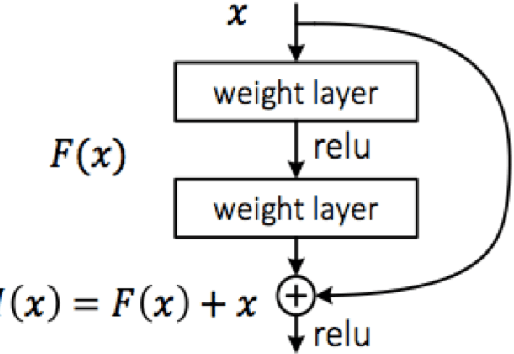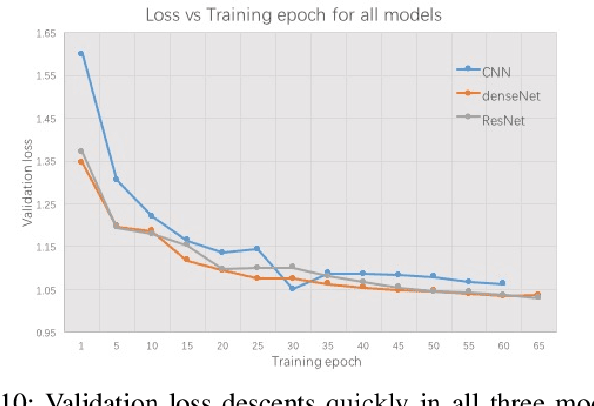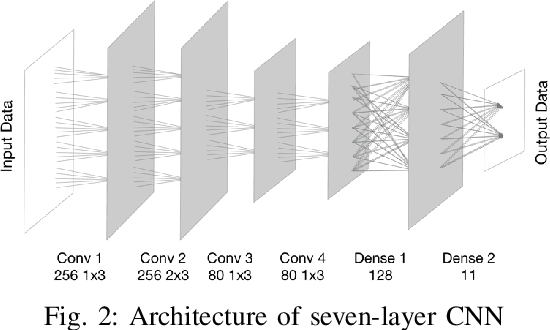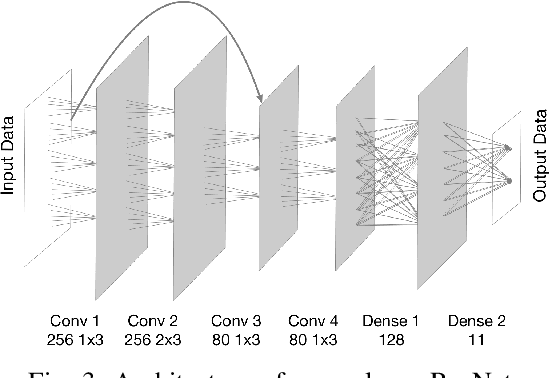Deep Neural Network Architectures for Modulation Classification
Paper and Code
Jan 05, 2018



In this work, we investigate the value of employing deep learning for the task of wireless signal modulation recognition. Recently in [1], a framework has been introduced by generating a dataset using GNU radio that mimics the imperfections in a real wireless channel, and uses 10 different modulation types. Further, a convolutional neural network (CNN) architecture was developed and shown to deliver performance that exceeds that of expert-based approaches. Here, we follow the framework of [1] and find deep neural network architectures that deliver higher accuracy than the state of the art. We tested the architecture of [1] and found it to achieve an accuracy of approximately 75% of correctly recognizing the modulation type. We first tune the CNN architecture of [1] and find a design with four convolutional layers and two dense layers that gives an accuracy of approximately 83.8% at high SNR. We then develop architectures based on the recently introduced ideas of Residual Networks (ResNet [2]) and Densely Connected Networks (DenseNet [3]) to achieve high SNR accuracies of approximately 83.5% and 86.6%, respectively. Finally, we introduce a Convolutional Long Short-term Deep Neural Network (CLDNN [4]) to achieve an accuracy of approximately 88.5% at high SNR.
 Add to Chrome
Add to Chrome Add to Firefox
Add to Firefox Add to Edge
Add to Edge